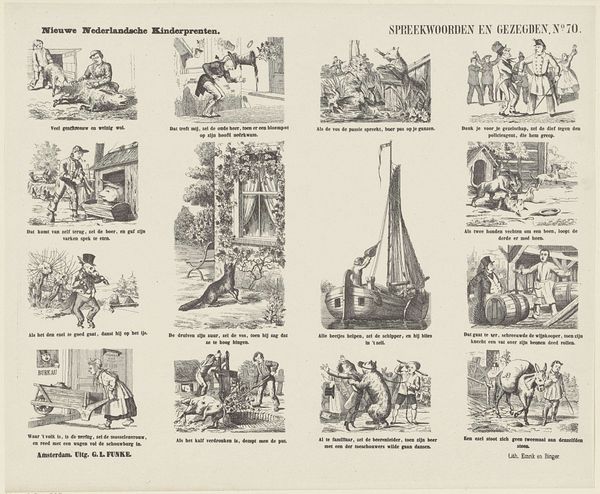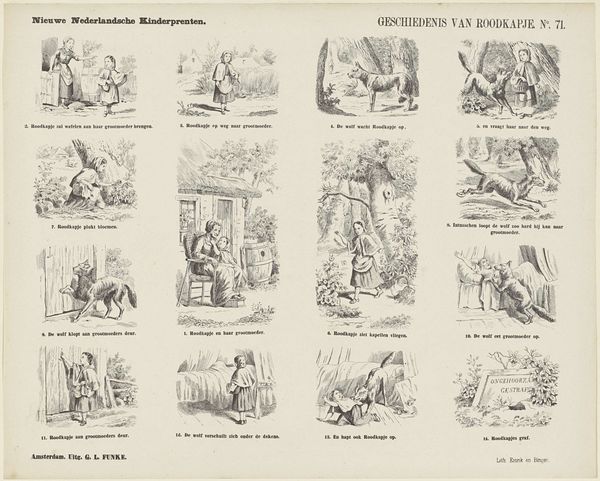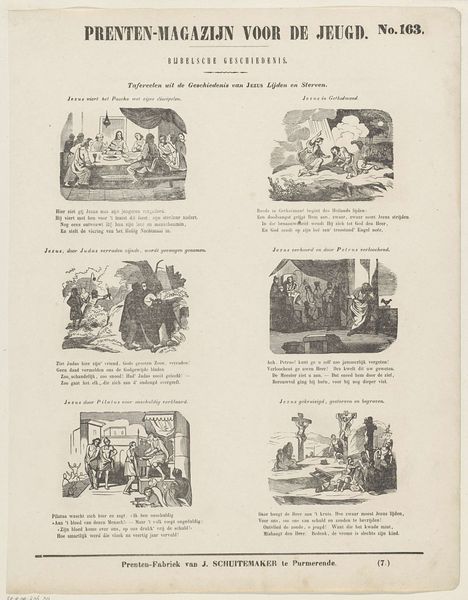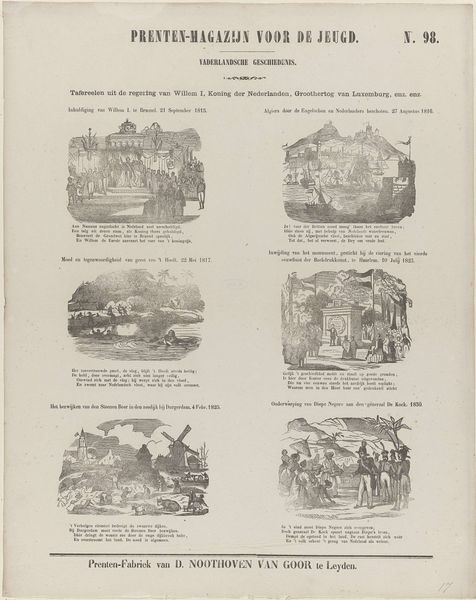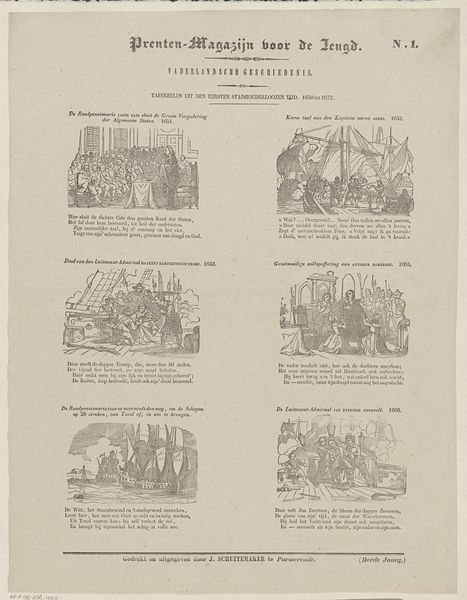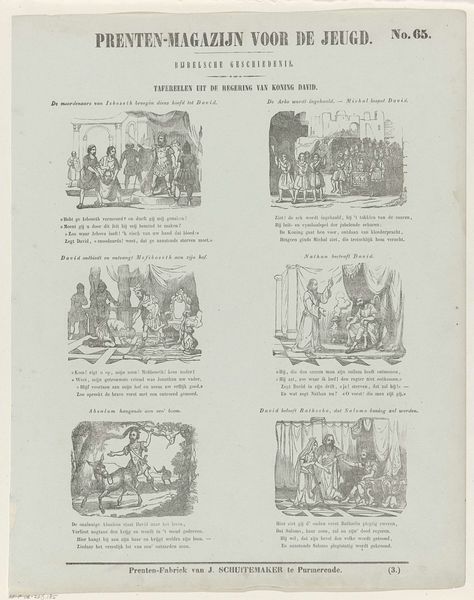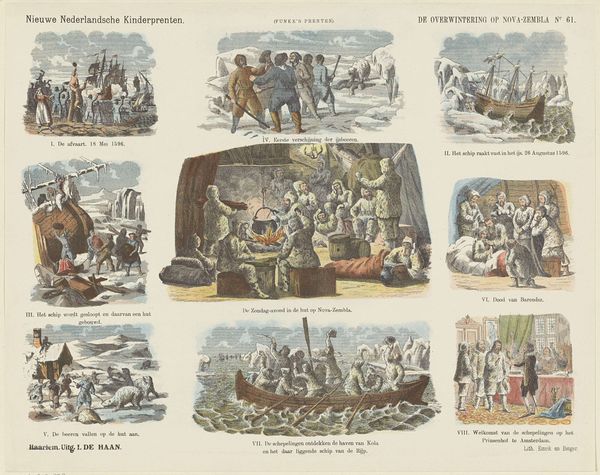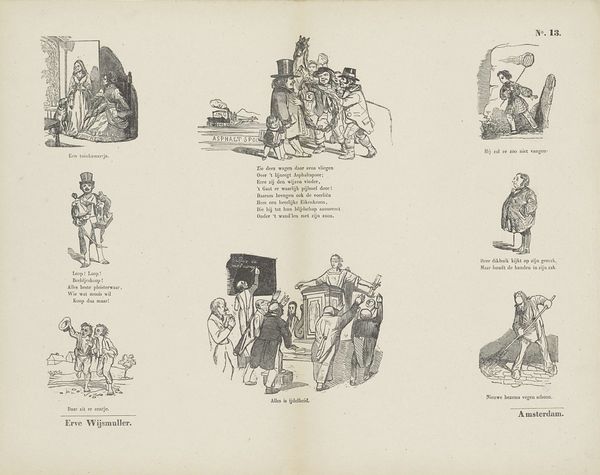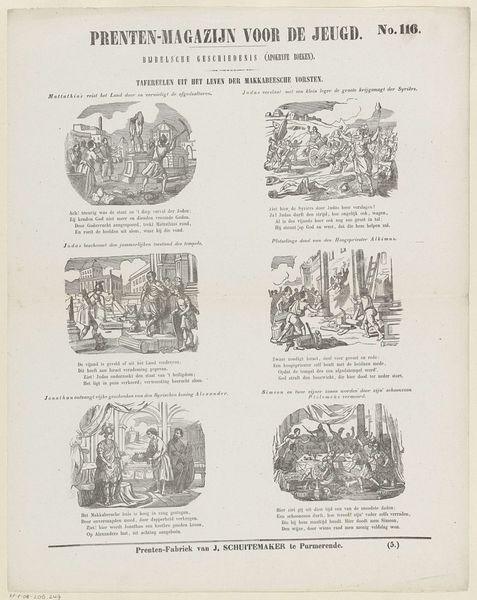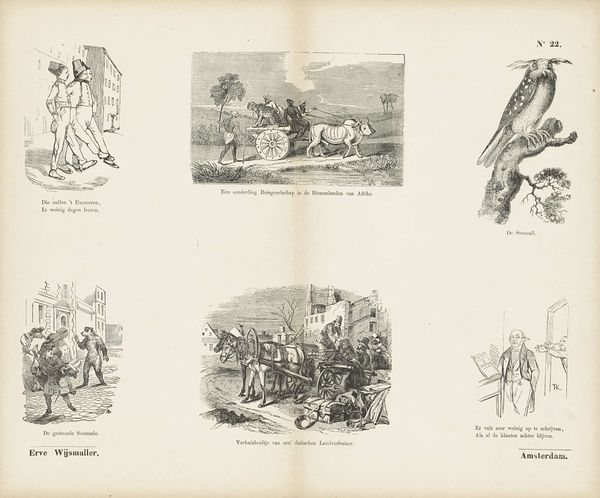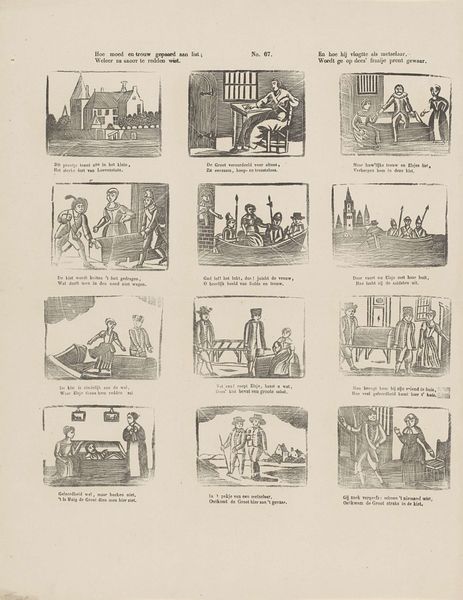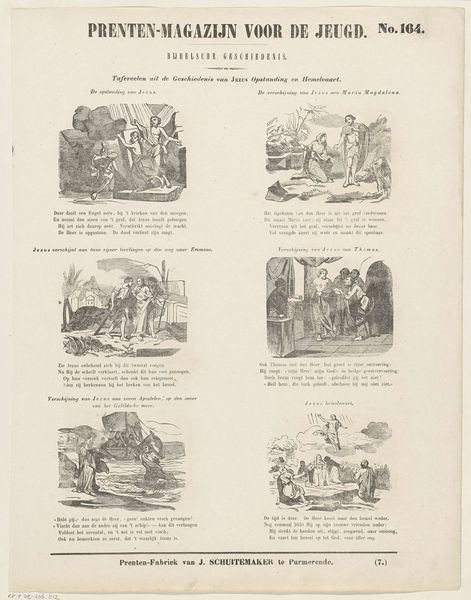
print, engraving
#
narrative-art
#
dutch-golden-age
# print
#
genre-painting
#
history-painting
#
engraving
Dimensions: height 336 mm, width 429 mm
Copyright: Rijks Museum: Open Domain
Curator: Here we have "De overwintering op Nova-Zembla" (The Wintering on Nova Zembla). Created between 1865 and 1875 by George Lodewijk Funke, this print showcases a narrative split into different vignettes. Editor: It strikes me immediately as a grim story. The harsh lines of the engraving, the stark black and white, convey a feeling of cold and isolation. I'm curious about the choices of this particular reproduction process. Curator: As an engraving, the image aligns with a Dutch tradition of visual storytelling, simplifying the complexities of this historical moment of exploration and struggle into readily reproducible, didactic imagery. The technique allows for clear symbolic articulation. Each vignette presents a carefully arranged tableau of endurance and resilience, tapping into shared cultural understanding of Dutch identity, and the courage of early explorers. Editor: Interesting. So, the materiality almost lends itself to dissemination and reinforces a constructed narrative. Think about the labor involved, too – the skilled hands of the engraver meticulously etching each line, each icy scene, and how that connects to the manual effort of those early explorers they depict. Was this intended for popular consumption, perhaps? Curator: Exactly. Images like this acted as moral instruction, visually educating children about the historical context in terms of moral virtue and cultural inheritance. It shows what symbols—ships, bears, small rooms—represent as Dutch national narrative in concentrated visual form. This one touches upon the power of discovery, confronting fears, and the importance of surviving winter—ideas still resonating in cultural memory today. Editor: I keep circling back to the physical properties of the print, the deliberate, painstaking work involved. To distribute images that spoke to the era's values and ideals. Did the limitations of engraving, for example, subtly impact the narrative itself? The abstraction? The way emotions and struggles could or could not be displayed? Curator: In some ways yes, as the physical form creates an emotional imprint. Engravings favor stark contrast. In a way, they heighten that binary by which stories of the past—here survival in icy expanses—are perceived today: good versus evil; courage versus defeat. Editor: It gives me a new appreciation for this artwork, seeing beyond the surface level story of a historical moment toward broader discussions concerning cultural narratives. Curator: It's fascinating how closely aligned form and idea often are; recognizing these patterns certainly adds complexity to our readings.
Comments
No comments
Be the first to comment and join the conversation on the ultimate creative platform.
